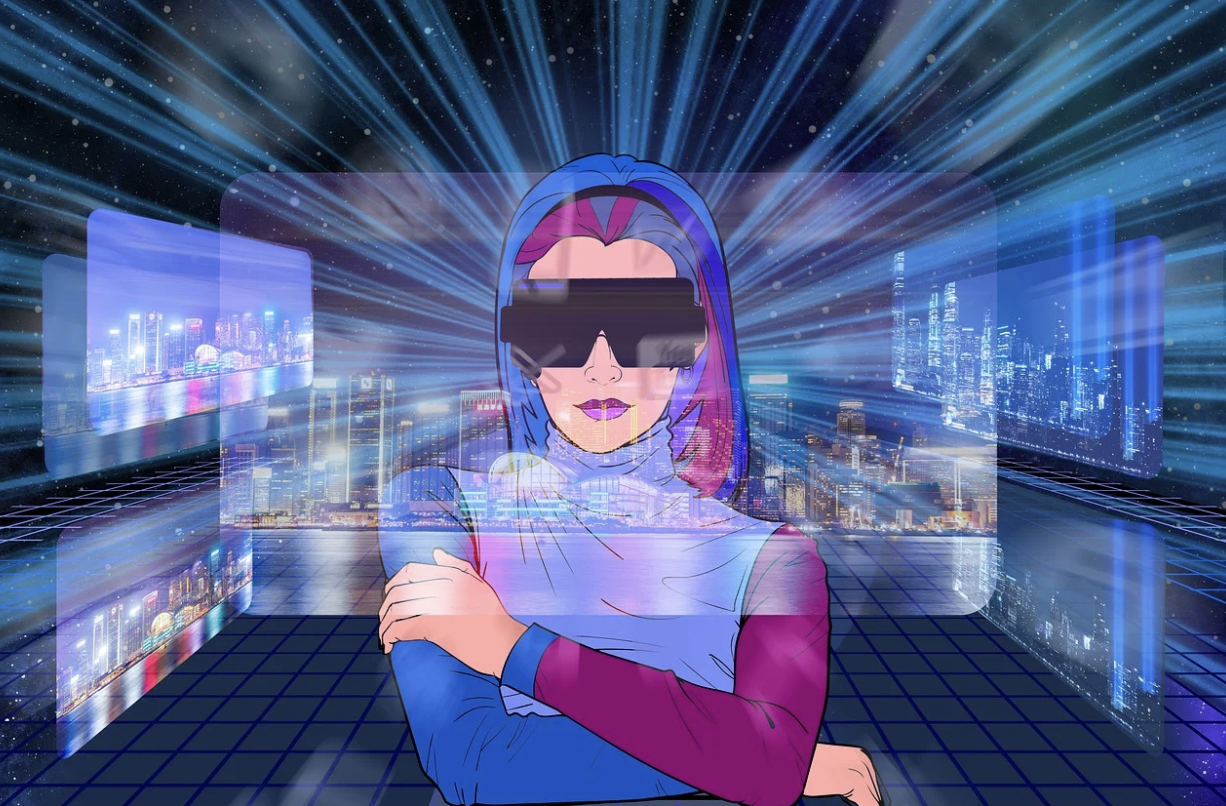Introduction
Virtual Reality is a simulated environment that mimics reality for an observer. For this it uses devices like headsets and goggles to provide services like training, education, tourism and gaming.
The importance of VR can be gauged from the fact that the global VR market size in 2022 was estimated at USD 59.96 billion and is expected to grow at a compound annual growth rate of 27.5% from 2023 to 2030.
Types of VR
VR is of many types:
Non-immersive VR: In a non-immersive VR, you are not immersed in the virtual environment. You observe from a distance and interact with extrinsic controls. A great example of a non-immersive VR is a children’s video-game.
Fully-immersive VR: In a fully-immersive VR, you feel as if you are ‘ in ‘ the virtual world. Objects in the VR will react to your movements as if in real. For example, the Virtual Shooter game.
Semi-immersive VR: In a semi-immersive VR, you are somewhat immersed in the VR, while still being connected to your physical reality. For example, in a flight simulator – there is a concave screen with various controls and you operate being aware of the real world in the extended background of the console
Collaborative VR: In a collaborative VR, different individuals perform in the same environment. Not only can they interact with the same environment, they can interact with each other as well.
Augmented VR: In augmented VR, the setting is the real world and digital information is overlaid on it. For example with smart glasses, relevant information is displayed when looking at objects
Mixed Reality: In mixed type reality, elements of both real and virtual world are there but here you can affect reality also. For example, drone being guided to bomb a location
VR Hardware
There are mainly two types of VR devices:
Tethered: These include headsets connected to a PC or a game console. SteamVR is a popular tethered VR platform. It is able to support headsets from many vendors like HTC, Windows and Valve.
Standalone: Here, all the components required to have VR experience are included in the headset and no separate dashboard is required. For example, Oculus VR headsets.
VR Accessories
There are several important accessories:
Omni-directional Treadmills: These allow your virtual self to move in any given direction, giving you a realistic experience
VR Gloves: These give a more realistic tactile or touch experience.
Tracker for the entire body: These are costly, but provide a full-immersion feel and are particularly useful for training.
VR Lenses: These are stereoscopic lenses positioned between the screen and your eyes and distort the image into appearing three-dimensional
Motion controllers: These include joystick, buttons and other controllers which allow fine-grained interaction with the virtual environment
VR Covers: There can be skin discomfort when wearing headsets for long. VR covers provide skin protection in such instances.
Applications of VR
There are several applications of VR:
In Training: VR makes it possible to simulate stressful situations for training. Firefighters, EMTs, police officers, soldiers and surgeons can be trained in a VR environment safely giving them a sense of the likely pressures
In Education: VR can make students experience information in a more direct way. For example, a history teacher can take students back in time where they can explore life
In Healthcare: VR has many applications in the healthcare industry. For example, it can be used in physical rehabilitation of recovering patients. In psychiatry, practitioners can ease patients’ anxieties by putting them through less strenuous simulations
In Retail: Using VR, customers can use apps to try on clothes, decorate their homes, experiment with hair styles and test eye glasses. In this way they can come to the right decisions
In Real Estate: Architects can present their models in 3D to their bosses. Home buyers can explore properties that are located far away.
In Entertainment: VR has already made inroads in gaming, but film and television industry will also benefit from creating immersive virtual experiences in movie theatres
In Tourism: Tourists can experience the location, for vacation before booking their tickets
In Prototyping: Engineers can develop virtual prototypes for visualisation and design, before actually manufacturing them
In Collaborative work: Business executives can meet virtually in the same room and collaborate via VR
In Dining: With VR we can travel virtually to different places and immerse ourselves in certain environments while tasting native dishes.
In Media: With immersive journalism the user can be taken to places where events are occurring live with 360 degree viewing
In Culture and Art: Some museums and galleries offer virtual visits or immersive experiences to help understand the history and culture associated with each work.
Conclusion
Virtual Reality is still in the beginning stages towards the realisation of complete replication of reality. The ultimate goal would be such likeness to reality that what is real and what is unreal becomes completely indiscernible. Matrix – the Hollywood movie represents this extrapolation of man’s fantasy. With Artificial Intelligence and Quantum Computing, VR technology can develop at an exponential rate and break all limitations of human fantasy.
Image Sourced from Freepik
